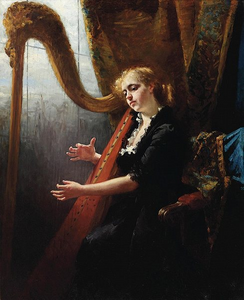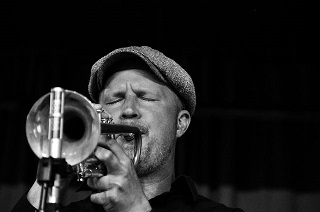Sound Waves

A sound wave has a physical volume that can be greater in pitch or longer in duration. Changing pitch and duration varies with each instrument.
We can produce a wave with a vibration through a mouthpiece, vocal chords, or by striking a drum or piano key. Our wave then vibrates through an instrument's tube, our throat, a piano string, or a percussive instrument.
- Pitch = high & low tones
- Duration = long & short time
Pitch
Pitch = high & low tones

A sound wave begins with a Pitch that we hear as a single tone. It raises or lowers as our sound wave's volume compresses or decompresses, to fit dimensions of a horn, throat, string, or drum.
If these instruments are shorter and/or thinner, the wave raises in pitch. Similarly, if they are longer and/or wider, the pitch is lower. The wave has either more or less space/distance to reverberate.
Additionally, a sound wave's vibration resonates across a material surface, or through an inner column of air. For example, the piano orders the size of its strings from left to right, for lower and higher pitches, respectively. The large, lower strings can vibrate only so fast for their weight and length.

Likewise, for a wind instrument, we adjust the vibration's speed through the shifting length of an air column. Pressing keys or valves changes the air volume. Tightening the reed or lips also increases the vibration's speed.
For a stringed instrument like a guitar, the neck area nearest its body are higher tones.
Interestingly, a harp has a similar shape vertically, as a grand piano. Both instruments have longer, thicker strings at one end, with the next string shorter and thinner than the last. Therefore, not being behind the wall of a piano, a harpist must feel string vibrations intensely, as they play.
Duration
Duration = long & short time
"...we learn to control any physical dimensions a wave travels along."
The pitch of a sound wave has a time length, or Duration that we control to create rhythm. A sound wave begins its path until it we stop it. We train our mouth and fingers when to activate or deactivate, at the precise moment.

therese schwartze
Fingers press more than one key, vocal chords readjust, despite their current position, and percussionists strike sequential drums. Likewise, brass players' fingers and lips are caught in action to lengthen or shorten a note's duration. This mostly happens in quick succession!
Also, we can't forget trombones or slide whistles, that slide back and forth to gradually change an air column.

Beginning musicians may compress/decompress their sound waves too much or too little, resulting in sounds that are too high or low (sharp or flat).
To play in tune, wind instrumentalists tighten or loosen their lips, and string players subtly adjust their fingers up or down. They listen for notes' relation to one another for correct pitch.
Since we understand a sound wave, we may use its pitch and duration as a brush stroke. Our artistry will improve the more we learn to control any physical dimensions a wave travels along.
Basically, sound waves emerge through vibration and depth. Although we can't see a sound wave, we can hear and feel it. Higher tones are more noticeable, and lower tones vibrate whatever they hit.

Each wave's time duration may be the same, but the energy to maintain them varies. Lower waves are less compressed and need more energy to keep their duration active. So, we blow/breathe/pluck harder to support a lower note's pitch, throughout its duration.
Moreover, instruments are constructed with different materials, allowing longer or shorter vibrations through their mass' density, according to their structure. Their material gives tones particular traits that we know and love. We recognize horns, strings, and drums from their quirky translation of a sound wave. Likewise, vocalists' distinct qualities attract their fans.
Loudness

Finally, the amplitude, or Loudness of a sound wave takes energy. Lower waves need more energy to increase loudness, and test the limits of the material they resonate. So, it's demanding to keep a note's pitch (and duration) constant amidst an increase in force. Therefore, musicians tune and warm up their instruments first, bringing them closer to the pitches they'll play.
In a word, feedback from our instruments' vibration and waves helps us to control pitch, duration, and loudness. One could say we feel, as well as listen.
Recommended reading: Page 8 and Rests in Sheet Music
The next page is an accelerated summary of theory for quick reference.